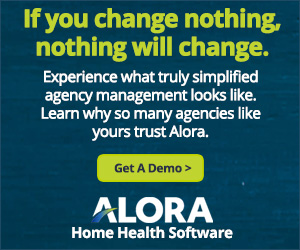
08 Feb Maximizing Payments Under the Expanded HHVBP Model
What is HHVBP?
Home Health Value-Based Purchasing (HHVBP) is a payment model that incentivizes home health agencies (HHAs) to provide high-quality care to Medicare beneficiaries. Under this program, Medicare makes adjustments to the payment made to HHAs based on the quality of care they provide.
This (original) HHVBP Model was implemented from January 1, 2016 through December 31, 2021 in nine states representing each geographic area in the nation. All Medicare-certified HHAs that provided services in Massachusetts, Maryland, North Carolina, Florida, Washington, Arizona, Iowa, Nebraska, and Tennessee competed on value, where payment was tied to quality performance.
Expanded HHVBP
The Expanded HHVBP Model builds on the success of the original HHVBP Model. The Expanded Home Health Value-Based Purchasing (HHVBP) Model seeks to improve the quality and efficiency of home health care across the nation to improve patients’ experience with their care, strengthen their physical function and address health issues before they require an emergency room visit.
Under the expanded HHVBP Model, HHAs receive adjustments to their Medicare fee-for-service payments based on their performance against a set of quality measures, relative to their peers’ performance
When does the Expanded HHVBP Model Start?
The first full performance year for the expanded HHVBP Model is CY 2023, which began on January 1, 2023. Calendar Year 2025 is the first payment year, with payment adjustment amounts determined by CY 2023 performance. In a payment year, an applicable percent ranging from -5% to 5% applies toward Medicare fee-for-service payments.
Maximizing Payment with Expanded HHVBP
This model provides an opportunity for home health agencies (HHAs) to receive higher payments by providing high-quality, patient-centered care and reducing costs. To maximize your payments under the HHVBP model, it’s important to understand the key quality measures and how to perform well on them.
Focus on patient experience
One of the primary ways to receive a higher payment is by focusing on patient experience.
This means providing care that meets the unique needs and preferences of each individual patient. This includes factors such as effective communication with healthcare providers, coordination of care, and empowering patients to be active participants in their own care.
Tips for improving patient experience:
- Communication: Ensure clear and regular communication with patients and their families to address their concerns and needs.
- Personalization: Tailor care plans to the unique needs and preferences of each patient.
- Empathy: Foster a culture of empathy and compassion among care providers and prioritize the emotional well-being of patients.
- Accessibility: Make sure that patients have easy access to care and support, including remote monitoring and telehealth services.
- Comfort: Provide a comfortable and safe environment for patients and make accommodations for any physical or sensory needs.
- Education: Educate patients and their families about their health conditions and treatment options and involve them in decision-making.
- Quality care: Ensure high-quality care delivery through ongoing training and professional development for care providers, and through regular quality improvement processes.
- Feedback: Encourage patients and their families to provide feedback and use that feedback to continuously improve the patient experience.
Focus on clinical quality
Another key factor for maximizing your payments is to focus on clinical quality. This means providing high-quality care that is evidence-based and meets best practice standards. This can be achieved through the use of interdisciplinary teams, patient and caregiver education, and care plans that are tailored to each patient’s specific needs.
Tips to focusing on clinical quality
- Patient-centered care: Prioritizing the needs, goals, and preferences of patients and their families.
- Evidence-based practice: Utilizing the latest research and best practices to inform decision-making and guide care.
- Interdisciplinary team approach: Collaborating with other healthcare providers, including physicians, nurses, therapists, and social workers, to provide comprehensive care.
- Continuous quality improvement: Monitoring and measuring outcomes and using data to identify areas for improvement and implement changes.
- Effective communication: Encouraging open communication among all members of the care team, and between the care team and patients and their families.
- Care coordination: Ensuring that all aspects of a patient’s care are coordinated, and that information is shared among providers.
- Risk management: Identifying and mitigating potential risks to patients, including falls, infections, and medication errors.
- Patient and family education: Providing patients and their families with the information and support they need to manage their care effectively.
- Technology integration: Using technology, such as electronic medical records and telehealth, to improve care coordination, communication, and patient outcomes.
Efficient resource use
To further increase your payments, it’s important to focus on efficient resource use. This includes reducing hospital readmissions, effectively managing medical conditions to avoid complications, and avoiding the use of unnecessary or duplicative services.
Tips for efficient resource usage
- Care planning: Developing individualized care plans that are based on patient needs, goals, and resources, and that take into account available community resources.
- Care coordination: Ensuring that all aspects of a patient’s care are coordinated, and that information is shared among providers to avoid duplication of services.
- Telehealth: Using technology such as telemonitoring and remote patient monitoring, to reduce the need for in-person visits and reduce costs.
- Clinical documentation: Implementing systems like cloud-based home health software to ensure that clinical documentation is accurate, up-to-date, and easily accessible, which can help to improve care coordination and reduce waste.
- Resource utilization: Monitoring and tracking resource utilization, including staff time, supplies, and equipment, and using data to identify areas for improvement.
- Supply chain management: Optimizing the procurement, storage, and distribution of supplies and equipment to reduce waste and increase efficiency.
- Workforce management: Managing staff resources effectively, including scheduling, training, and development, to reduce turnover and ensure that staff are utilized efficiently.
- Data analysis: Using data analytics to identify trends and patterns, and to make informed decisions about resource utilization.
- Collaboration: Working with other healthcare providers, including hospitals, long-term care facilities, and community-based organizations, to optimize resource utilization and improve outcomes.
Continuous quality improvement
Finally, continuous quality improvement is essential to maximizing your payments under the HHVBP model. This involves regularly monitoring and analyzing performance on the quality measures, using data to identify areas for improvement, and implementing changes to improve performance over time.
Tips for quality improvement
- Outcome measurement: Monitoring and measuring patient outcomes, such as functional status, pain levels, and patient satisfaction, to identify areas for improvement.
- Data analysis: Analyzing patient data, including clinical and financial data, to identify trends and patterns and to make informed decisions about care delivery.
- Performance improvement: Implementing systems for continuous performance improvement, including regular evaluations of processes and outcomes, and using data to drive improvement.
- Evidence-based practice: Using the latest research and best practices to inform decision-making and guide care.
- Interdisciplinary team approach: Encouraging collaboration and communication among all members of the care team, including physicians, nurses, therapists, and social workers, to ensure that patient needs are met.
- Patient and family engagement: Engaging patients and their families in the care process and encouraging their feedback and participation in quality improvement initiatives.
- Clinical documentation: Ensuring that clinical documentation is accurate, up-to-date, and easily accessible, which can help to improve care coordination and reduce waste.
- Risk management: Implementing systems to identify and mitigate potential risks to patients, such as falls, infections, and medication errors, and regularly evaluating and updating protocols.
- Staff training and development: Providing ongoing training and professional development opportunities to staff, which can help to improve skills and knowledge, and increase motivation and job satisfaction.
- Collaboration with other healthcare providers: Working with other healthcare providers, including hospitals, long-term care facilities, and community-based organizations, to optimize resource utilization and improve outcomes.
- Quality metrics: Developing and tracking quality metrics, such as readmission rates, patient satisfaction scores, and staff satisfaction scores, to monitor and improve performance over time.
Summary
In conclusion, the Expanded Home Health Value-Based Purchasing (HHVBP) Model presents a significant opportunity for your agency to receive higher payments for providing high-quality, patient-centered care. By understanding the key quality measures and focusing on continuous quality improvement, your agency can ensure it is providing the best possible care to its patients and receive the financial benefits of its efforts.
References:
https://innovation.cms.gov/media/document/hhvbp-newsletter-jan2023
https://innovation.cms.gov/innovation-models/expanded-home-health-value-based-purchasing-model

Alora’s home health software solution is ideal for agencies operating in both skilled and non-skilled care. For more than 16 years Alora has simplified workflow for countless agencies, while helping agency owners and administrators stay on top of the latest regulatory changes. Put simply, our goal is to make every aspect of day-to day home health care workflow easier, so your agency can thrive through the power of simplicity.




No Comments